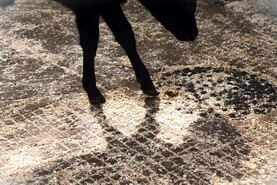In this article, we zone in on some of the key performance indicators (KPIs) for each individual breed.
Breeders are well used to seeing these indicators based on the national herd, but having them broken down by breed gives a clear indication of how you as a pedigree breeder fare in the greater scheme of things.
Looking through the breeds, we see a big variation on all four traits listed.
Calving interval and age at first calving are two of the most important traits when it comes to profit. The earlier you get a calf out of a cow, the earlier you can start to recoup some of your initial investment.
Similarly, unless you get a calf out of a cow each year, this costs you money.
While the pedigree game is a bit different in that one calf out of a cow may make well more than the average at sale time, she still stands to make more if she had another calf to sell at the same time the following year. Fertile, hardworking cows are the key to any profitable setup.
What do we notice with the KPIs for age at first calving? Firstly, only the top 20% of one breed calve down at 24 months – Angus.
A further four breeds come into the desired 24- to 26-month category, again relating to the top 20% of that breed.
Looking back to the average for each of the respective breeds, none fall into this desired category. Only three of the breeds’ average calving age is two and a half years or less.
If we go back to the bottom 20% of each breed, we see a minimum of four months added to the age of first calving. Seven breeds bottom 20% calve on average at three years or more.
This means that there are some in this bracket calving at four years or more.
This emphasises just how much gain can be achieved on this trait alone across the board.
The heifer is calved; the the next job is to get her back in calf.
Looking at the top one-fifth of breeders, all but one breed are able to achieve the desired calving index of 365 or less.
We again see the top end of some breeds far exceeding this target, gaining on average a massive 20 days short of the year.
Going a step back, four breeds see their average calving interval settle at a year and a week or less. This again would be looked upon favourably as some breeders want to calve at a similar time each year with their stock sometimes not given the opportunity to gain time.
Biggest issue
Again, the biggest issue surrounds the bottom 20% of each breed.
We see that cows in the bottom 20% of one breed have an average calving interval of 611 days.
All the cows analysed are pedigree cows and show what can be achieved by selecting for fertility as a key trait.
By emphasising the top 20% of each breed it shows that the genetics are out there in each breed. Some breeds classify themselves as a terminal one, and show little reliance on replacement traits such as age at first calving and calving interval.
However, this shows there are cows within each respective breed that can do both.
These two indexes make up a substantial part of both the replacement and terminal indexes.
Outlined below, we again break up these indexes into 20% brackets to allow you see just how well you rank.
So where are your cattle placed in the rankings? Is there room for improvement and can you get more out of your cattle? If you rank lowly, use these as a benchmark on what to improve on. Even if you do rank in the top 20%, aim for the top 1%.
Different farms have different set ups but no matter how good a breeder you are there’s always room for improvement.






 This is a subscriber-only article
This is a subscriber-only article









SHARING OPTIONS: